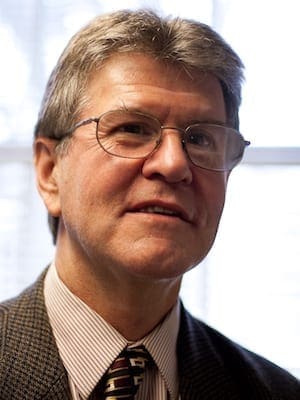This year marks a singularly grim anniversary in Christian history. In 2014, it is exactly 400 years since the start of the horrific persecution that destroyed the once flourishing church in Japan.
When we think of persecutions on this scale, we normally tend to set them in an ancient or medieval context.
The world of 1614, though, was in some ways remarkably modern, not least in terms of its literature and culture.
Shakespeare had just retired, and Cervantes was about to publish the second volume of “Don Quixote.”
Colonial North America already existed in crude form: St. Augustine, Santa Fe, Jamestown and Quebec City were already in existence, and the Dutch would soon be settling New Amsterdam.
Yet contemporary events in eastern Asia seem to take us back to the earliest church.
During the 16th century, Catholic missions enjoyed stunning successes in Japan. By the end of that century, though, the official mood was turning more sour and intolerant.
Persecution abated until 1614, when the violence intensified sharply following the establishment of the shogunate.
The new ruler, Hidetada, prohibited the practice of Christianity so that “All missionaries, catechists and anyone who gives shelter to missionaries, and all seminarians, are expelled from the country.”
Those who refused to obey faced the death penalty.
These laws were renewed and expanded under his despotic successor, Iemitsu (1623-51), who was fanatically anti-Christian.
Between the deadly year of 1614 and the 1640s, Japanese Christianity was rooted up at the cost of (at least) tens of thousands of lives, probably more.
This persecution marked a lethal turning point in what had, up to that point, seemed to mark the spectacular progress of Christianity in eastern Asia.
Although we often recall Muslim-Christian conflicts, it was the Shinto-Buddhist nation of Japan that perpetrated one of the most thorough extirpations ever recorded of a church.
The Japanese exceeded any Muslim successes in how totally they destroyed once-booming Christian communities.
This movement had significant long-term effects for the direction of the Christian movement, as the annihilation of the Japanese missions decisively prevented Christianity resuming its movement toward global status, striking a dreadful blow against its progress in Asia.
By eliminating potential rivals, both these campaigns contributed to maintaining the near-total European monopoly of Christianity.
Catholic missions first arrived in Japan in 1549, when the Jesuit Francis Xavier landed at Kagoshima, in the southern island of Kyushu.
The timing was important because Japan was at that time in political chaos, lacking a decisive central authority that might have excluded the alien new religion.
Japan was in the era of Warring States, in which several different warlords contended for supremacy, each ruling in effect as an independent sovereign.
One of the most significant was Oda Nobunaga, whose struggle to unite the country put him at odds with the powerful Buddhist sects.
Tension with Japan’s traditional religious authorities predisposed him to favor new religions like the Christians, who were also useful in importing new military technologies, including modern artillery.
Christians were rewarded by being allowed to proselytize freely.
The Jesuits directed their attention particularly toward the lords and gentry, the daimyo, knowing that in such a feudal society the masses of ordinary people would have little alternative but to follow the lead of the upper classes.
Significant numbers converted, and their long endurance under later persecutions shows that their Christian loyalties went far beyond merely obeying the commands of their landlords.
By 1582, Japan had perhaps 200,000 Christians and 250 churches, an amazing growth in such a short time.
At the height of Catholic power, around 1610, the Japanese church had at least 300,000 followers, concentrated in southern Japan, especially in Kyushu, Omura and Nagasaki.
To help put that number in context, the British colonies in North America would not have a population on that scale until after 1710.
 Philip Jenkins is distinguished professor of history at Baylor University in Waco, Texas, and serves as co-director for the program on historical studies of religion in the Institute for Studies of Religion (ISR). He is the author of numerous books, including “Laying Down the Sword: Why We Can’t Ignore the Bible’s Violent Verses” (2011). A version of this article first appeared on The Anxious Bench, where he blogs regularly, and is used with permission.
Philip Jenkins is distinguished professor of history at Baylor University in Waco, Texas, and serves as co-director for the program on historical studies of religion in the Institute for Studies of Religion (ISR). He is the author of numerous books, including “Laying Down the Sword: Why We Can’t Ignore the Bible’s Violent Verses” (2011). A version of this article first appeared on The Anxious Bench, where he blogs regularly, and is used with permission.
Editor’s note: This is the first article of a two-part series. Part two will appear tomorrow.
Philip Jenkins is distinguished professor of history at Baylor University in Waco, Texas, and serves as co-director for the program on historical studies of religion in the Institute for Studies of Religion. He is the author of numerous books, including “The Great and Holy War: How WWI Became a Religious Crusade.”

